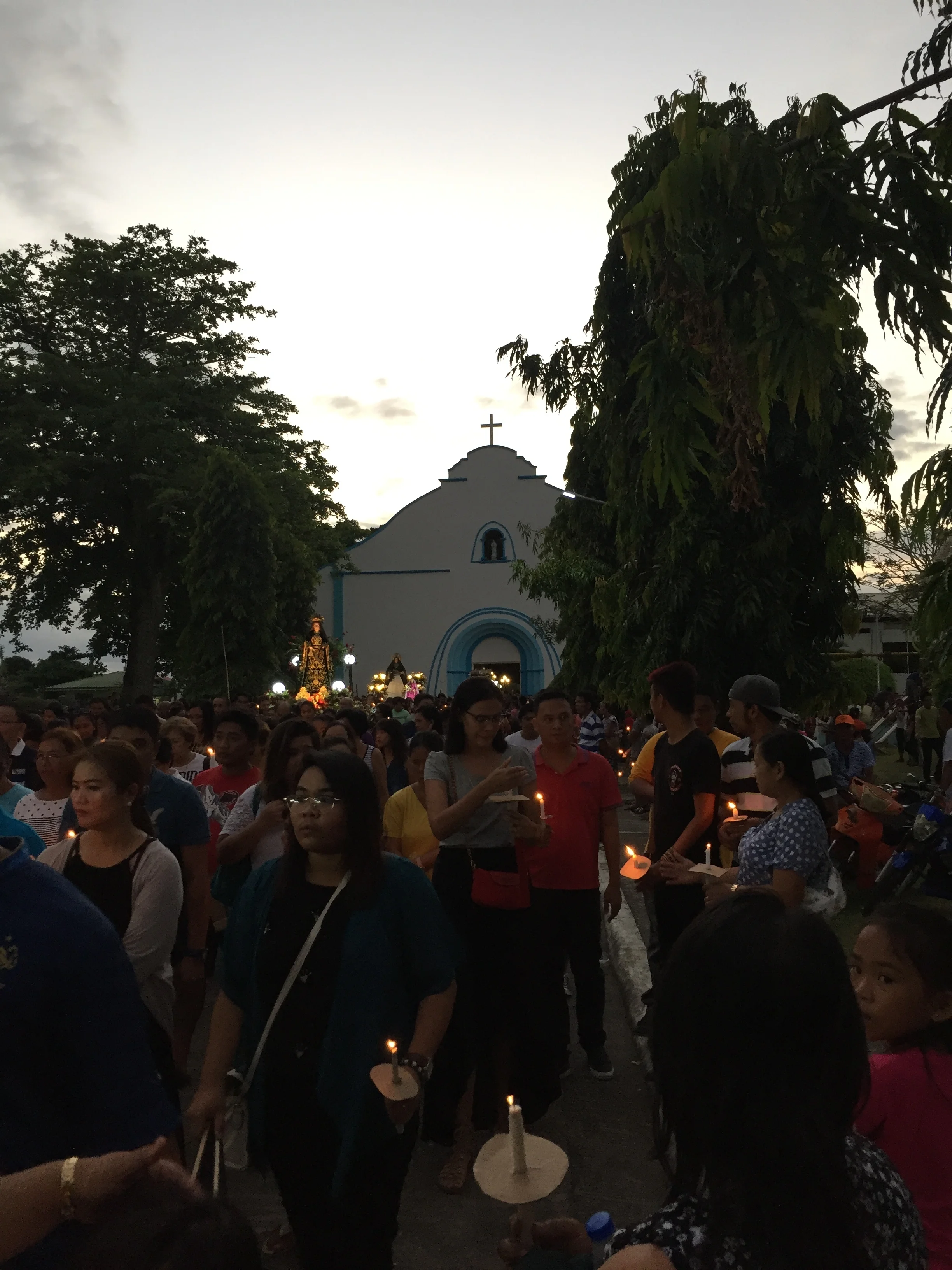Black Saturday with the Del Rosario Family
Entry by Ryan Romero
15 Apr 2017
Holy Week began on Palm Sunday and continued on through to Ash Wednesday, Maundy Thursday, Good Friday, Black Saturday and onto Easter Sunday. Each day had its rites and traditions. And Batan, just like other towns all over the country, practice their own customs. The week was filled with days that began and ended with evening masses.
Poblacion Batan doubled in size during Black Saturday. Visitors from all of Batan's neighbouring Barangays offer their pilgrimage to the town plaza directly in front of Elmo's House. Jeepney-loads of families with candles congregated around the main streets as elaborate religious caros (floats) gathered in numbers. Each caro was sponsored and commissioned by Batan's founding families. Some were as old as the families themselves but refreshed and updated every year. As the sun set, the procession began. It weaved through the streets with people in tow amidst a hush of prayers. It began and ended in front of the Immaculate Concepcion Municipal Parish Church with the caros kept inside overnight for Easter Sunday mass.
The Caro of Sta. Veronica
The Del Rosario family has had Saint Veronica for several generations. She was inherited from the Del Rosario's maternal grandparents, Jose Fulgencio of Batan, Aklan and Guillerma Feliciano of Balete, Aklan by Sitang Fulgencio and is now cared for by Lola Purita Fulgencio. The Del Rosario family started arriving at Lola's home at noon as the rush of preparations for the evening ahead was at its busiest. Family members came from all over the country to be part of this yearly custom. Everyone paid their respects to Sta. Veronica, which was placed in the middle of the courtyard just before entering the home. Lunch was followed by visits, naps and late afternoon merienda. At dusk, Sta. Veronica was taken to the church and positioned along with the rest of the saints and figures. The Del Rosario Family accompanied the caro as it was carried through the streets.
Saint Veronica
A pious woman of Jerusalem in the first century AD, she is a celebrated saint in many pious Christian countries. According to church tradition, Veronica was moved with pity when she saw Jesus carrying his cross to Golgotha and gave him her veil that he might wipe his forehead. Jesus accepted the offering, held it to his face, and then handed it back to her—the image of his face miraculously impressed upon it. This piece of cloth became known as the Veil of Veronica.
At first encounter, it was hard not to notice the religious figures on the caros as having pale, European features. As symbols for veneration, this can be a troubling dynamic. Is this another example of Spanish colonial influence extending so far into the current present that it is still an important aspect of the town's current religious practices? Adorned with luxurious fabrics, intricate lattices and exemplary woodwork, the caros can be dismissed as eerie. But part of my presence in this town is not to dismantle the traditions and beliefs, but to have the openness to gain deeper understanding. Black Saturday was an evening shared with family, submerged in prayer and observation for a truly transcending spiritual event.









